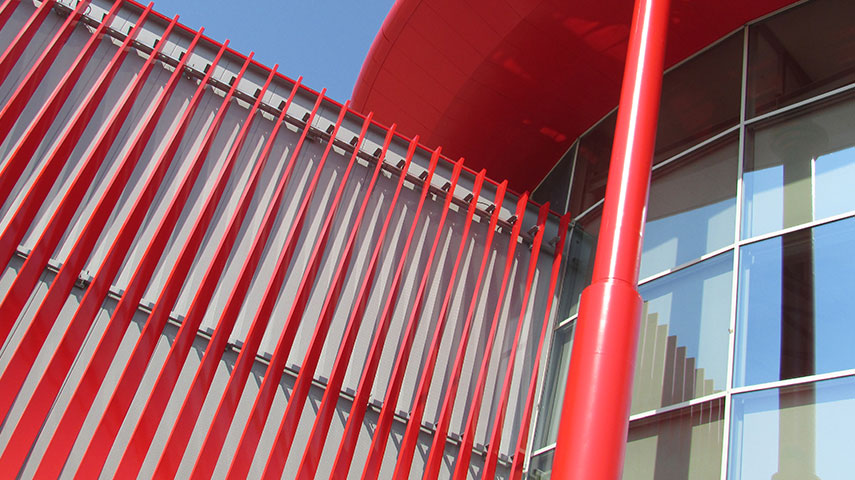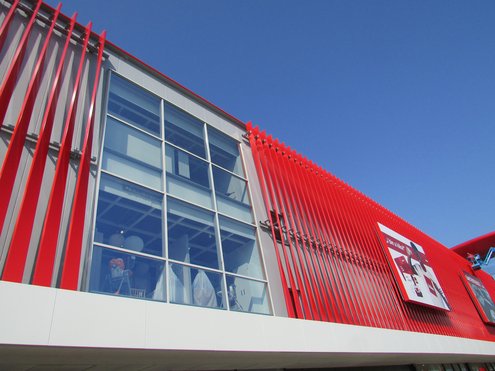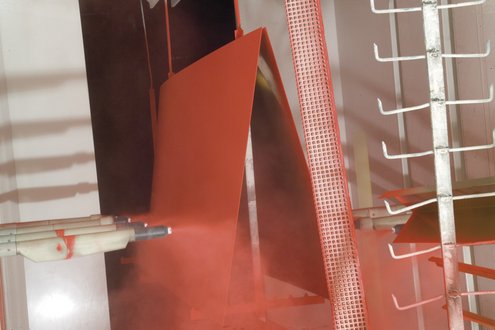Mr. Kardum, how many branches will now be supplied with a facade coated by AGRU?
kika has decided to implement the red corporate design in several stores in the coming years. This kicked off with conversion work in 2016 at the kika branch in Innsbruck. We were able to convince Mglass to use our powder coating for this pilot project. The initial order for 2,600 m² of aluminium louvres with red powder coating went smoothly and this resulted in follow-up orders for two more outlets.
Where are the other two branches located and how many square meters are involved this time?
kika is now converting the branches in Ansfelden and Eisenstadt. We are coating a total of 4,900 m² of profiles in traffic red RAL 3020 colour for the two branches. To do this, we are using electrostatic coating to apply polyester resin powder. This means that we need approx. 800 kg of powder coating for the facades.
How exactly does the electrostatic coating process work?
To put it simply, spray guns charge the powder particles with a high voltage and then spray them onto the workpiece. These electrically charged powder particles are attracted to the earthed workpiece and precipitate on it. The materials coated with the powder are then placed in a curing oven where the powder melts, forming a uniform surface film, and is cured at an object temperature of 180 °C - 200 °C. This type of coating can withstand decades of wind and weather.
Where do the challenges in production lie?
Standards-compliant pre-treatment for one thing. This means that all pre-treatment parameters must be adhered to and the powder film curing temperature must also be correct. If this work is not done correctly, the powder film will not adhere to the workpiece.
What does the pre-treatment look like in detail?
Like with dip coating or hot-dip galvanising, powder coating also requires drainage holes to allow the various pre-treatment liquids to drain away. If these drain holes are not drilled correctly, the pre-treatment liquids cannot drain off and will usually escape through the powder film during the curing process and then evaporate at 180 °C. Of course, we pay meticulous attention to uniform powder application, because non-uniform application can lead to colour deviations within the workpiece. This was a major challenge in this particular case, as the louvres are rotated by 90° lengthways and are therefore always at a different angle to the powder spray gun.


